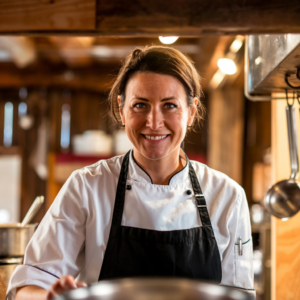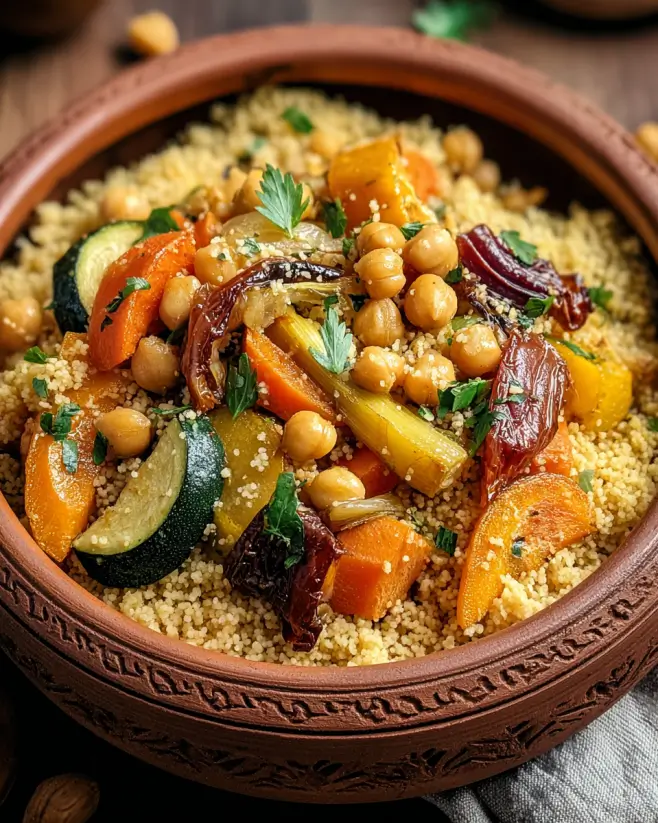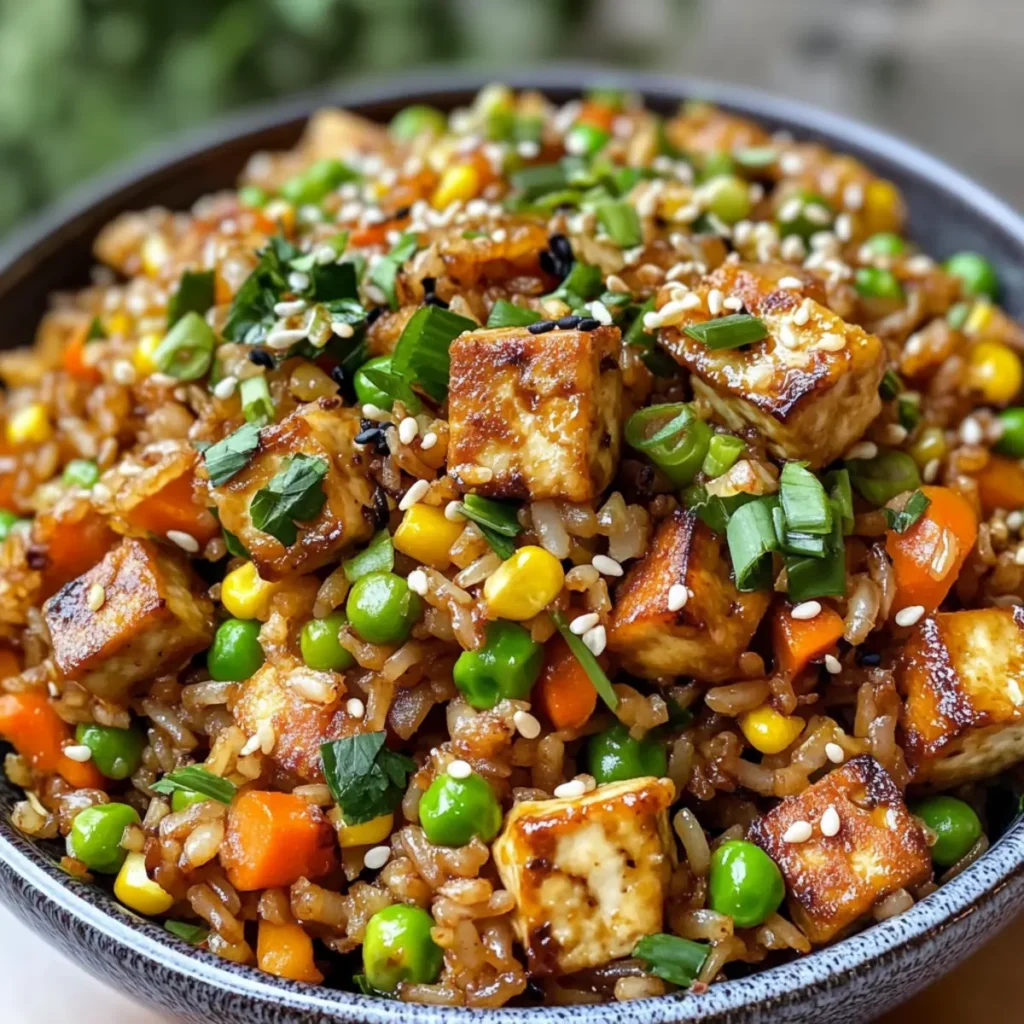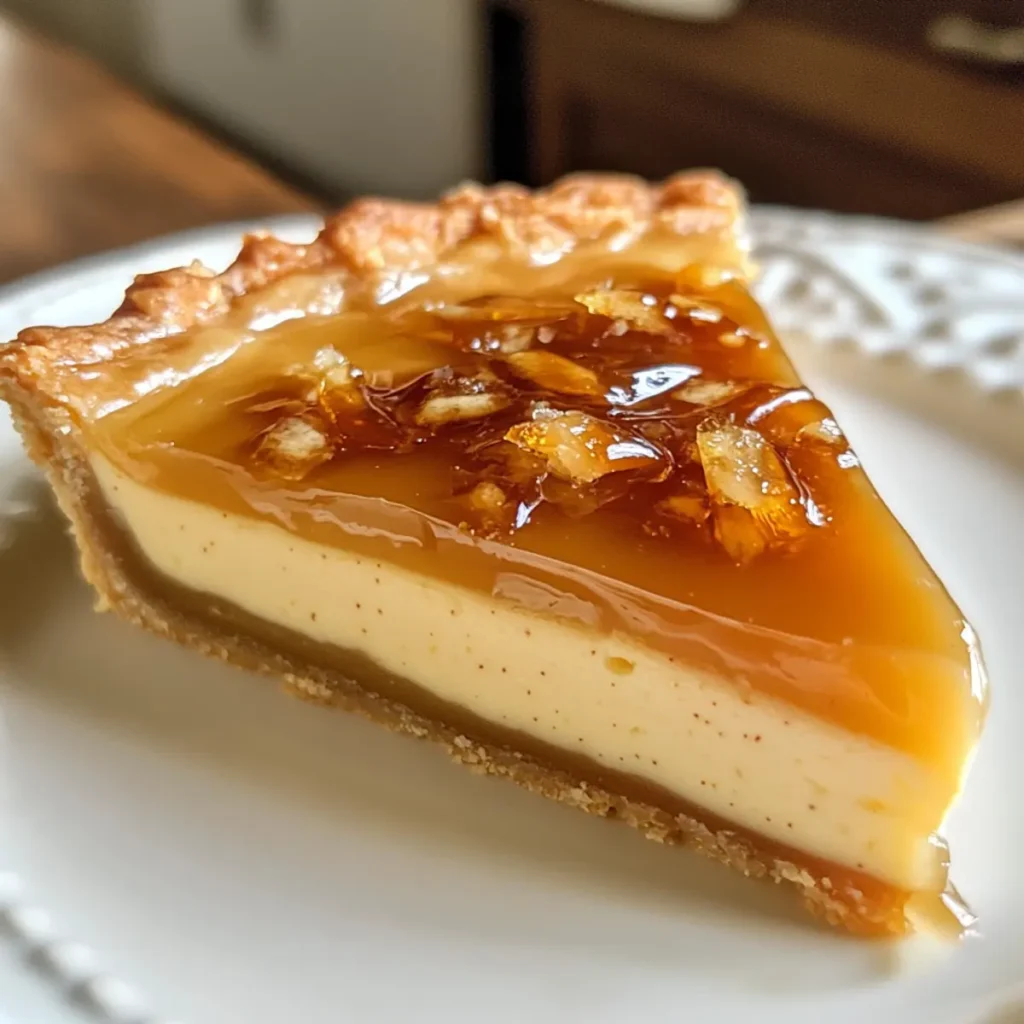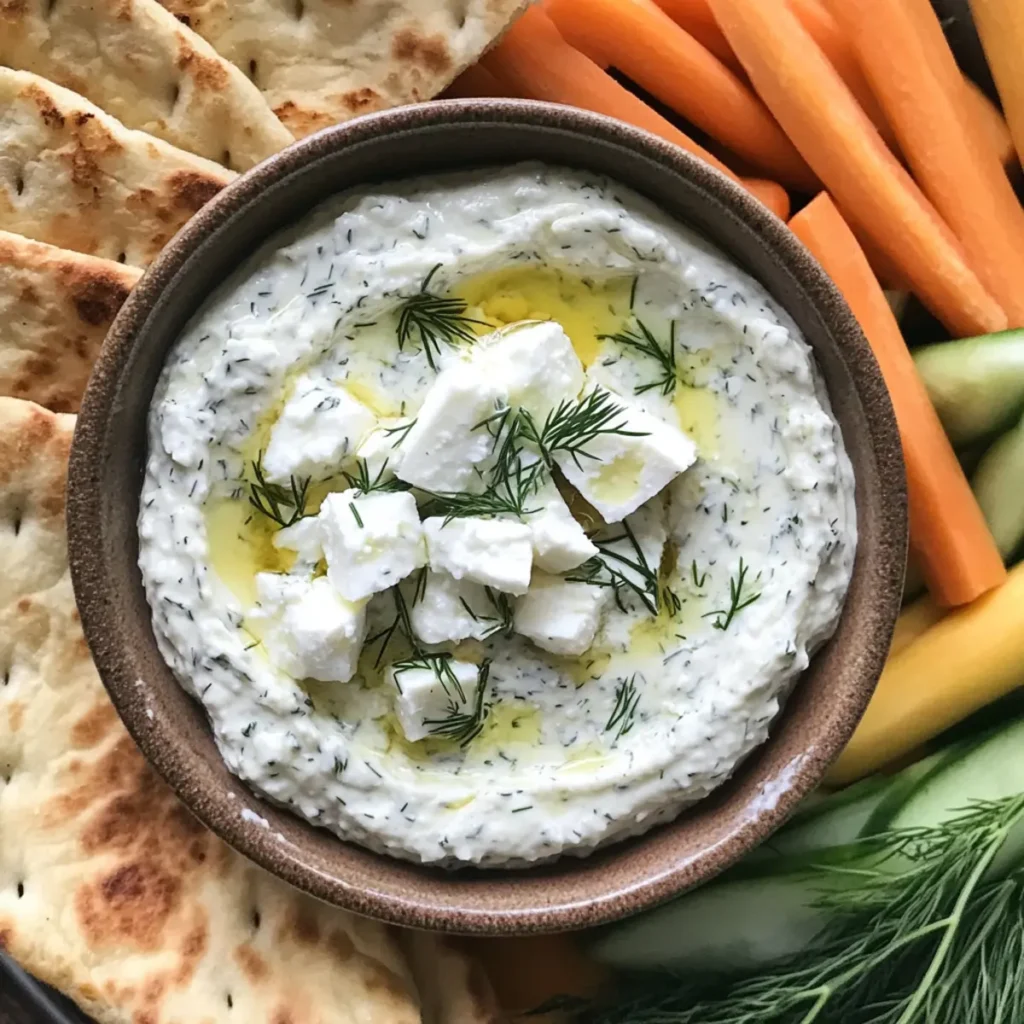Introduction to Moroccan Couscous with Roasted Vegetables
There’s something magical about the aroma of spices wafting through the kitchen, isn’t there? Moroccan Couscous with Roasted Vegetables brings that magic right to your dinner table. This dish is not just a meal; it’s a celebration of flavors and colors that can brighten even the busiest of days. Whether you’re looking for a quick solution after a long workday or a dish to impress your loved ones, this recipe has you covered. With its fluffy couscous and vibrant roasted veggies, it’s a delightful way to nourish both body and soul.
Why You’ll Love This Moroccan Couscous with Roasted Vegetables
This Moroccan Couscous with Roasted Vegetables is a game-changer for anyone who craves flavor without the fuss. It’s quick to prepare, taking just 35 minutes from start to finish. The combination of spices creates a taste explosion that will have your taste buds dancing. Plus, it’s a healthy option packed with nutrients, making it perfect for busy weeknights or a cozy weekend gathering. You’ll love how easy it is to impress your family and friends!
Ingredients for Moroccan Couscous with Roasted Vegetables
Gathering the right ingredients is the first step to creating this vibrant dish. Here’s what you’ll need:
- Couscous: The star of the show! This tiny pasta absorbs flavors beautifully, making it the perfect base.
- Vegetable Broth: A flavorful liquid that elevates the couscous. You can use homemade or store-bought for convenience.
- Zucchini: Adds a lovely texture and mild flavor. Feel free to swap it with yellow squash if you prefer.
- Red and Yellow Bell Peppers: These colorful veggies bring sweetness and crunch. They also add a pop of color to your dish.
- Red Onion: A touch of sharpness that balances the sweetness of the peppers. You can use yellow onion if that’s what you have.
- Olive Oil: Essential for roasting the veggies and adding richness. Extra virgin olive oil is a great choice for its flavor.
- Spices: Ground cumin, coriander, paprika, and cinnamon create a warm, aromatic blend that defines Moroccan cuisine.
- Salt and Pepper: Simple seasonings that enhance all the flavors. Adjust to your taste!
- Raisins: These little gems add a touch of sweetness. Dried apricots can be a delightful substitute.
- Fresh Parsley: A sprinkle of this herb adds freshness and a burst of color. You can also use cilantro if you prefer.
- Lemon Juice: A squeeze of lemon brightens the dish and balances the flavors beautifully.
For exact measurements, check the bottom of the article where you can find everything listed for easy printing. Enjoy the process of gathering these ingredients; each one plays a role in creating a delicious Moroccan Couscous with Roasted Vegetables!
How to Make Moroccan Couscous with Roasted Vegetables
Creating Moroccan Couscous with Roasted Vegetables is a straightforward process that brings a burst of flavor to your table. Follow these simple steps, and you’ll have a delicious meal ready in no time!
Step 1: Preheat the Oven
Start by preheating your oven to 400°F. This step is crucial for even cooking. A hot oven ensures that your vegetables roast perfectly, developing that lovely caramelization that enhances their natural sweetness.
Step 2: Prepare the Vegetables
Next, grab your diced zucchini, red bell pepper, yellow bell pepper, and red onion. In a large bowl, toss these veggies with olive oil, cumin, coriander, paprika, cinnamon, salt, and pepper. Make sure every piece is coated well. This spice blend is what gives your Moroccan Couscous its signature flavor!
Step 3: Roast the Vegetables
Spread the seasoned vegetables in a single layer on a large baking sheet. Roast them in the preheated oven for 20-25 minutes. Keep an eye on them! You want them tender and slightly caramelized, with a hint of golden brown. This roasting process brings out their natural sweetness and adds depth to your dish.
Step 4: Cook the Couscous
While the veggies are roasting, bring 2 ½ cups of vegetable broth to a boil in a medium saucepan. Once it’s bubbling, remove it from the heat and stir in 2 cups of couscous. Cover the pot and let it sit for 5 minutes. This allows the couscous to absorb all that flavorful broth, making it fluffy and delicious.
Step 5: Combine Ingredients
After the couscous has absorbed the broth, fluff it with a fork to separate the grains. Then, gently mix in the roasted vegetables, raisins, lemon juice, and chopped parsley. This combination creates a colorful and aromatic dish that’s as pleasing to the eyes as it is to the palate.
Step 6: Serve and Enjoy
Finally, serve your Moroccan Couscous warm. For an extra touch, garnish with additional parsley or a sprinkle of lemon zest. Pair it with a refreshing salad or some crusty bread, and you’ve got a meal that’s sure to impress!
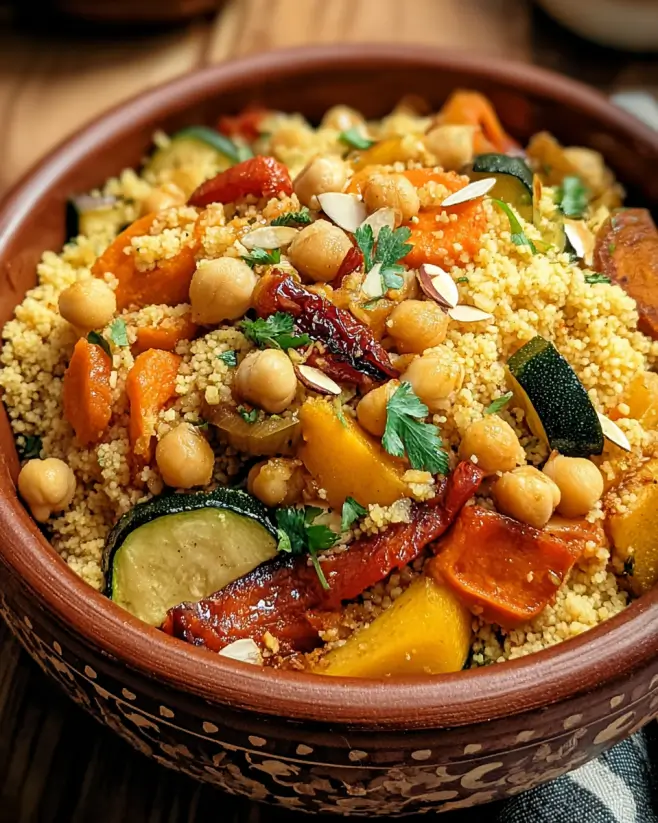
Tips for Success
- Prep your veggies ahead of time to save on cooking time.
- Don’t skip the roasting; it enhances the flavors significantly.
- Experiment with spices! A pinch of cayenne can add a nice kick.
- Let the couscous sit covered for the full 5 minutes for the best texture.
- Garnish with toasted nuts for added crunch and flavor.
Equipment Needed
- Baking Sheet: A large one for roasting veggies. A cast-iron skillet works too!
- Medium Saucepan: For boiling the vegetable broth. Any pot will do.
- Mixing Bowl: To toss your veggies. A large plate can work in a pinch.
- Fork: For fluffing the couscous. A whisk can also do the trick!
Variations
- Quinoa Swap: For a gluten-free option, substitute couscous with quinoa. It adds a nutty flavor and is packed with protein.
- Spicy Kick: Add a pinch of cayenne pepper or red pepper flakes for a spicy twist that complements the sweetness of the vegetables.
- Protein Boost: Toss in some chickpeas or grilled chicken for added protein. This makes it a heartier meal.
- Seasonal Veggies: Use whatever vegetables are in season. Carrots, eggplant, or sweet potatoes can add unique flavors.
- Herb Variations: Experiment with different herbs like mint or cilantro for a fresh twist on the classic parsley garnish.
Serving Suggestions
- Fresh Salad: Pair with a crisp green salad dressed in lemon vinaigrette for a refreshing contrast.
- Yogurt Sauce: Serve with a dollop of tangy yogurt or tzatziki for a creamy complement.
- Herb Garnish: Sprinkle extra parsley or mint on top for a vibrant finish.
- Wine Pairing: Enjoy with a light white wine, like Sauvignon Blanc, to enhance the flavors.
FAQs about Moroccan Couscous with Roasted Vegetables
Can I make Moroccan Couscous with Roasted Vegetables ahead of time?
Absolutely! You can prepare the couscous and roasted vegetables in advance. Just store them separately in the fridge. When you’re ready to eat, reheat them together for a quick meal.
What can I substitute for couscous?
If you’re looking for a gluten-free option, quinoa is a fantastic substitute. It has a similar texture and absorbs flavors beautifully, making it a great alternative in this Moroccan dish.
How can I add more protein to this dish?
For a protein boost, consider adding chickpeas or grilled chicken. Both options complement the flavors of the Moroccan spices and make the meal more filling.
Is this dish suitable for meal prep?
Yes! Moroccan Couscous with Roasted Vegetables is perfect for meal prep. It keeps well in the fridge and can be enjoyed cold or reheated, making it a convenient option for busy days.
Advertisement
Can I use frozen vegetables instead of fresh?
While fresh vegetables are ideal for roasting, frozen vegetables can work in a pinch. Just be sure to thaw and drain them well before seasoning and roasting to avoid excess moisture.
Final Thoughts
Cooking Moroccan Couscous with Roasted Vegetables is more than just preparing a meal; it’s about creating a moment of joy in your kitchen. The vibrant colors and enticing aromas transform your space into a culinary haven. Each bite is a delightful blend of textures and flavors, reminding you of the warmth of home-cooked meals. Whether you’re sharing it with family or enjoying it solo, this dish brings a sense of satisfaction and comfort. So, roll up your sleeves, embrace the process, and let this Moroccan-inspired recipe become a cherished part of your culinary repertoire!
Moroccan Couscous with Roasted Vegetables: A Tasty Delight!
Ingredients
Method
- Preheat the oven to 400°F.
- On a large baking sheet, toss the diced zucchini, red bell pepper, yellow bell pepper, and red onion with olive oil, cumin, coriander, paprika, cinnamon, salt, and pepper.
- Spread the vegetables in a single layer and roast for 20-25 minutes, or until tender and slightly caramelized.
- While the vegetables are roasting, bring the vegetable broth to a boil in a medium saucepan.
- Once boiling, remove from heat and stir in the couscous. Cover and let it sit for 5 minutes to allow the couscous to absorb the broth.
- Fluff the couscous with a fork and stir in the raisins, lemon juice, and chopped parsley.
- Once the vegetables are done roasting, add them to the couscous mixture and gently combine.
- Serve warm, garnished with additional parsley if desired.
Nutrition
Notes
- For added flavor, consider adding a pinch of cayenne pepper for heat.
- Substitute raisins with dried apricots for a different sweetness.
- Quinoa can be used instead of couscous for a gluten-free option.
